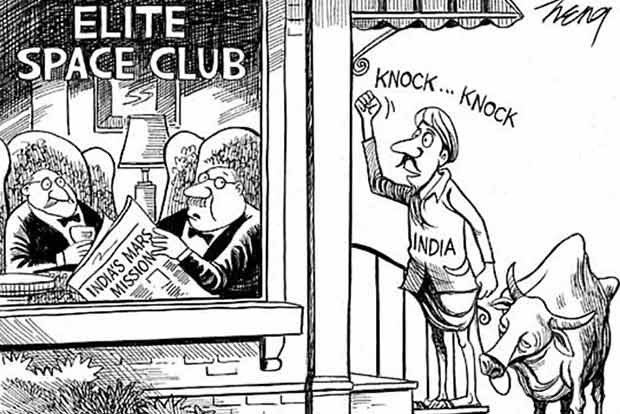Begin typing your search...
Editorial: When satire is at stake
It’s unfortunate that the word ‘cartoon’ is often unfairly used to describe something comical. In doing so, one forgets about the art of cartooning and what it represents. Cartoons, typically simple drawings that are sometimes exaggerated for effect, are an important genre used by the media to reveal contradictions or sometimes even absurdities in social and political situations.

Chennai
Other times, they reflect the opinion of the common man through uncomplicated visuals. An editorial cartoon can quickly and clearly make a point, especially in situations where words are not as effective.
For decades, the small but strident community of cartoonists have been holding up a mirror to society. Even in traditional newsrooms, editorial cartoonists don’t get involved in the tightrope of balancing column space between ruling and opposition parties. They are unfettered in presenting a reflection of current affairs, which is also why, the prestigious Pulitzer awards - considered the gold standard in journalism - includes Editorial Cartooning as one of its fourteen prizes.
It’s likely that this light-hearted approach to serious matters is what allowed cartoonists to coast under the radar. But despite the flippant facade, it’s important to recognise this genre as an important tenet of free speech and defend it with the same vigour. To quote our courts and Article 19 (1) (a) of the Constitution, freedom of speech is vital for progress. Without free expression, society would be bereft of ideas and original thought that helps contribute to its development. Of course, one is cognisant of the rider that accompanies freedom of expression where the said freedom can reasonably be restricted by the State on a few grounds including ‘public decency or morality’ and for inciting prejudice.
It often happens that satirical expression is restricted in accordance with the restrictions envisaged under Article 19 (2) of the Constitution. In many cases when satire targets certain marginalised segments or is seen as inciting prejudice against a certain group, it comes under sharp scrutiny. One of the most tragic outcomes of untrammelled free speech was seen in the case of French magazine Charlie Hebdo, which faced not one or two, but three terrorist attacks - presumed to be a result of cartoons that it published against a religious head.
This is why even the staunchest defenders of free speech will always factor in the “harm principle”, which keeps tabs on the majoritarian point of view of something that may be considered distasteful, while preventing powerful parties from harming vulnerable ones, especially in matters of verbal expression. However, invoking the harm principle in advance is a tool that many thin-skinned political parties attempt to do, a case in point being the recent spate of ‘warnings’ issued by Twitter on well-known cartoonists, at the behest of political parties.
We are a country where the courts needed to step in to protect the rights of activists jailed for over a year while exercising their right to freedom of expression. The right to protest and freedom of expression must have different benchmarks and definitions from criminal or terrorist activities. And never should the sensitivities of politicians become the gauge to determine a ‘criminal offence. Just as laws and policies are adopted and implemented through a democratic process, democracy should also allow people to express their viewpoints on the very same laws and policies. To protect expression is to protect democracy, and in its protection lies the hallmark of a civilised and tolerant society.
Visit news.dtnext.in to explore our interactive epaper!
Download the DT Next app for more exciting features!
Click here for iOS
Click here for Android
Next Story



